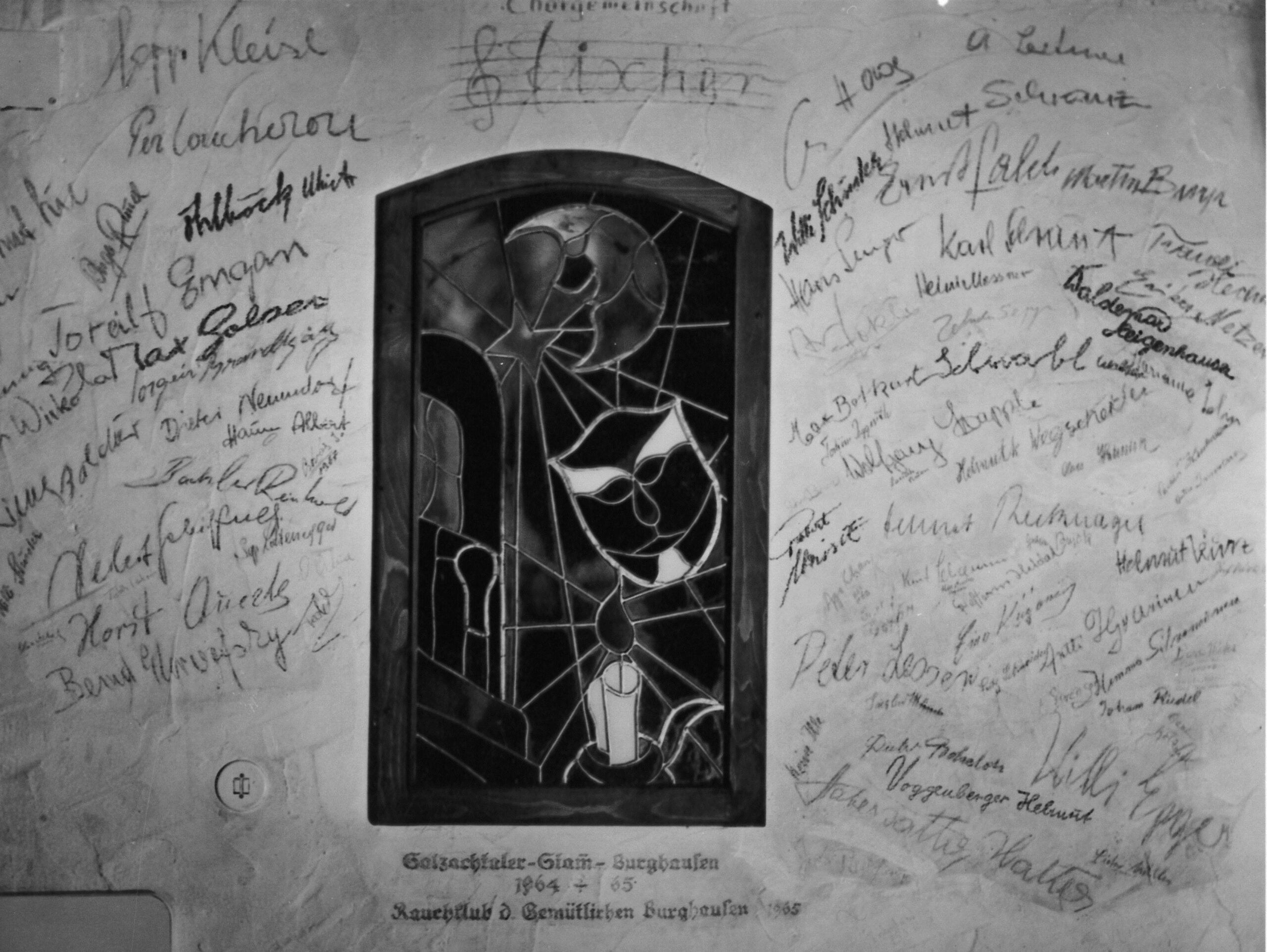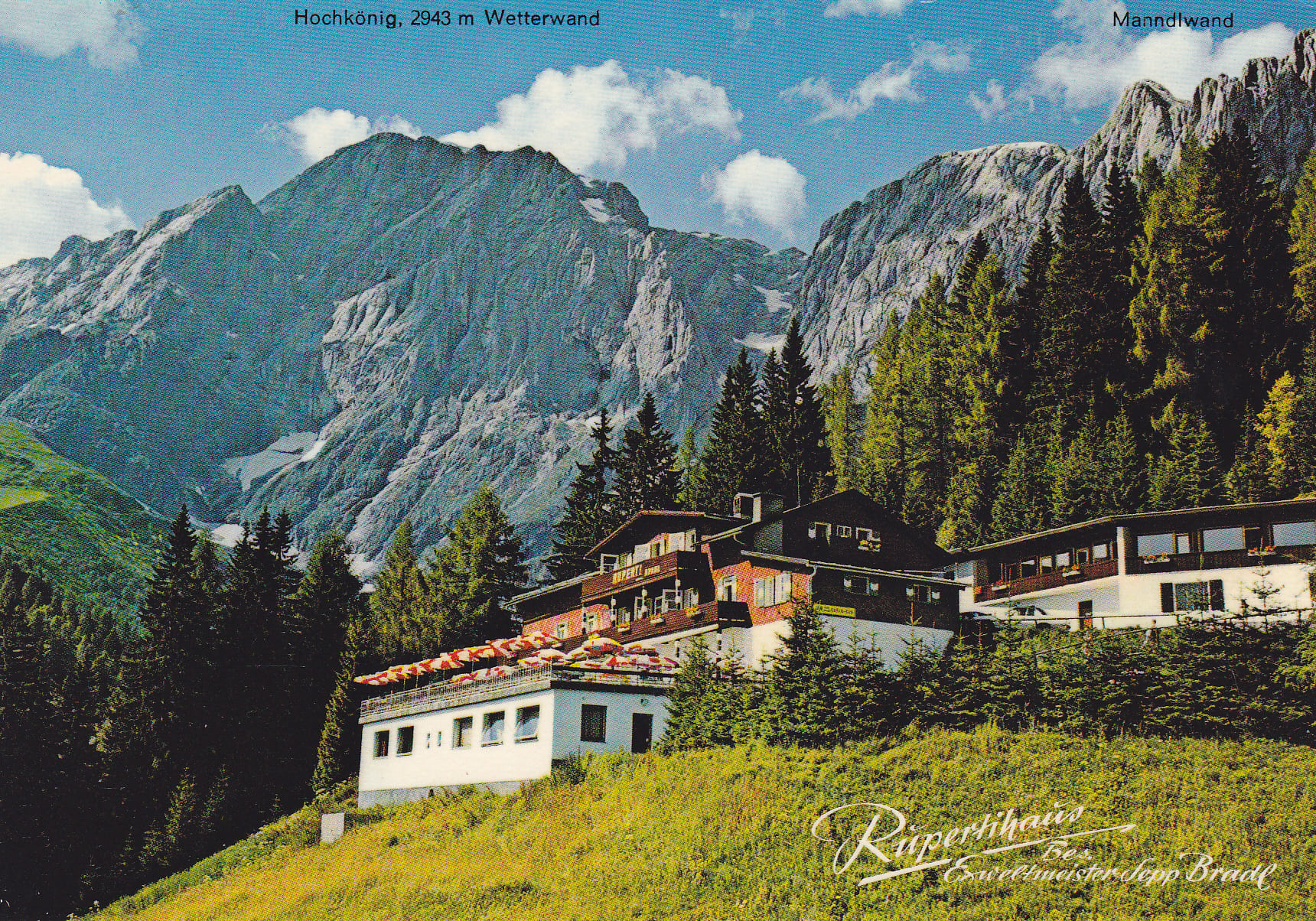Rupertihaus
In 1892, not far from here, the "Ruperti
Tunnel“ was started, and in the process, a
large dormitory for the workforce, as well
as some workshops, were built here. In
1931, the mining operations in Mühlbach
went bankrupt, leading to the sale of all
properties. In 1935, the new owner, DAV
Reichberg, opened the "Rupertihaus“
with 40 beds, a spacious dormitory, dining
rooms, showers, and baths, with electric
lighting and running hot and cold water.
From 1952, this place became the home of
our former world champion in ski jumping: Sepp "Buwi“ Bradl, and his family.
Operating as a guesthouse and hotel,
the Rupertihaus hosted the best ski
jumpers of its time, many celebrities, and
numerous tourist guests over the decades.
It served as accommodation and a starting
point for training in the Riedingtal
training center for the many ski jumping
nations that came here to Mitterberg for
training camps. After Sepp Bradl‘s death
in 1982, the Rupertihaus was sold, and on
December 7, 1990, it was destroyed by fire,
burning down to its foundations.
Kids
What is climate?
The climate describes what the weather is like in a region over a long period of time. For example, some countries have warm summers and cold winters, while other regions remain warm all year round. The climate determines which plants and animals can live there. It also influences what people grow there and how they live. The climate can change when the earth's temperatures rise or fall, which often happens due to things like climate change.
What is climate?
The climate describes what the weather is like in a particular region over many years. There are warm, tropical climate zones with lots of sun and rain, and colder, polar climate zones with snow and ice. The climate is influenced by various factors, such as distance from the equator, altitude above sea level and ocean currents. Unlike the weather, which changes daily, the climate remains stable over a long period of time. Climate changes, such as climate change, occur when average temperatures and weather conditions change over many years.
What is climate?
The climate describes the average weather conditions in a region over a long period of time, usually 30 years. It determines how warm, cold, wet or dry it is there over the course of the year. Different climate zones, such as tropical, temperate or polar climate, are created by factors such as geographical location, altitude and proximity to oceans. The climate influences which plants and animals can live in a region and what cultivation possibilities there are for humans. Climate changes, such as climate change, are caused by natural processes and human activities such as greenhouse gas emissions.


